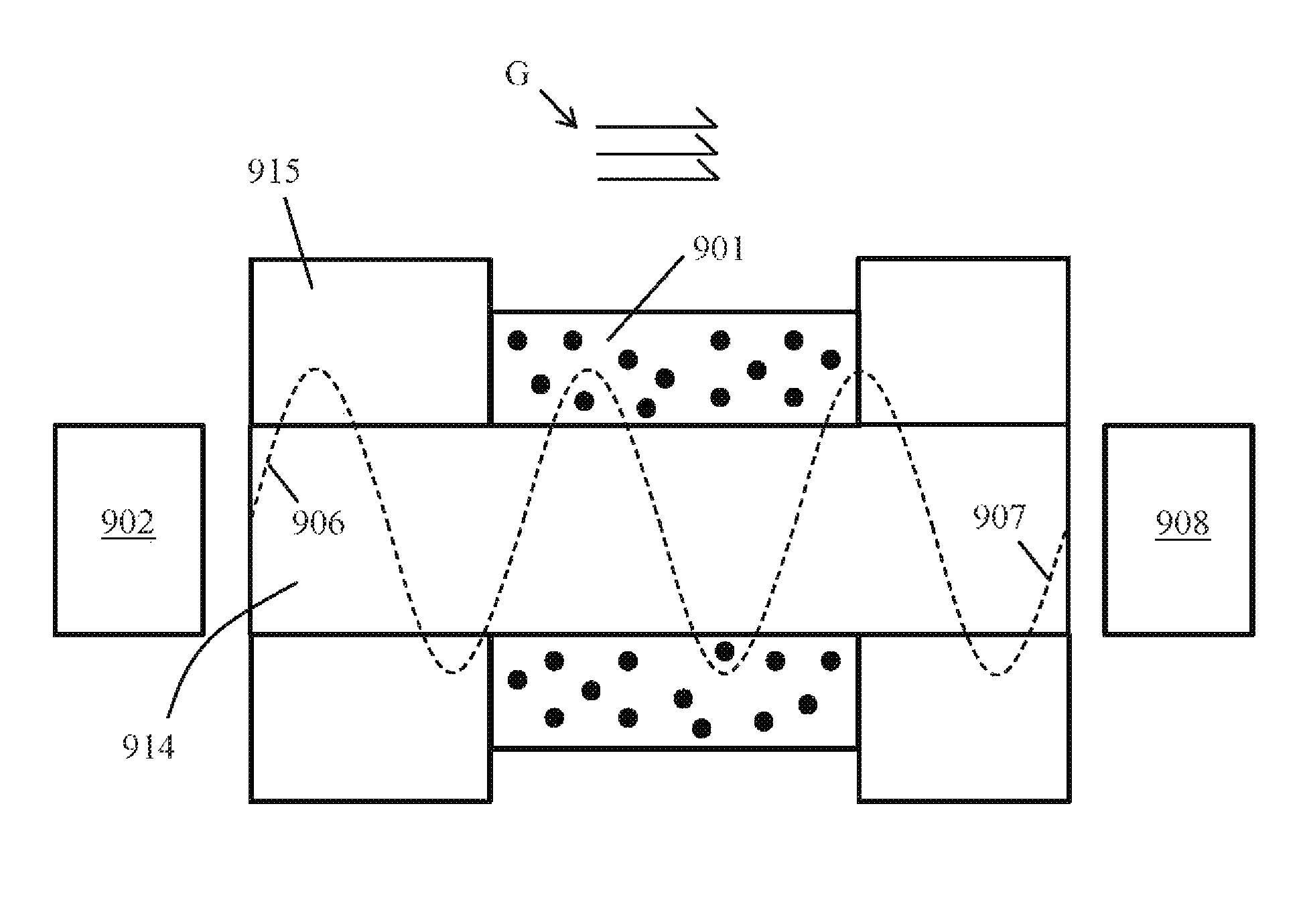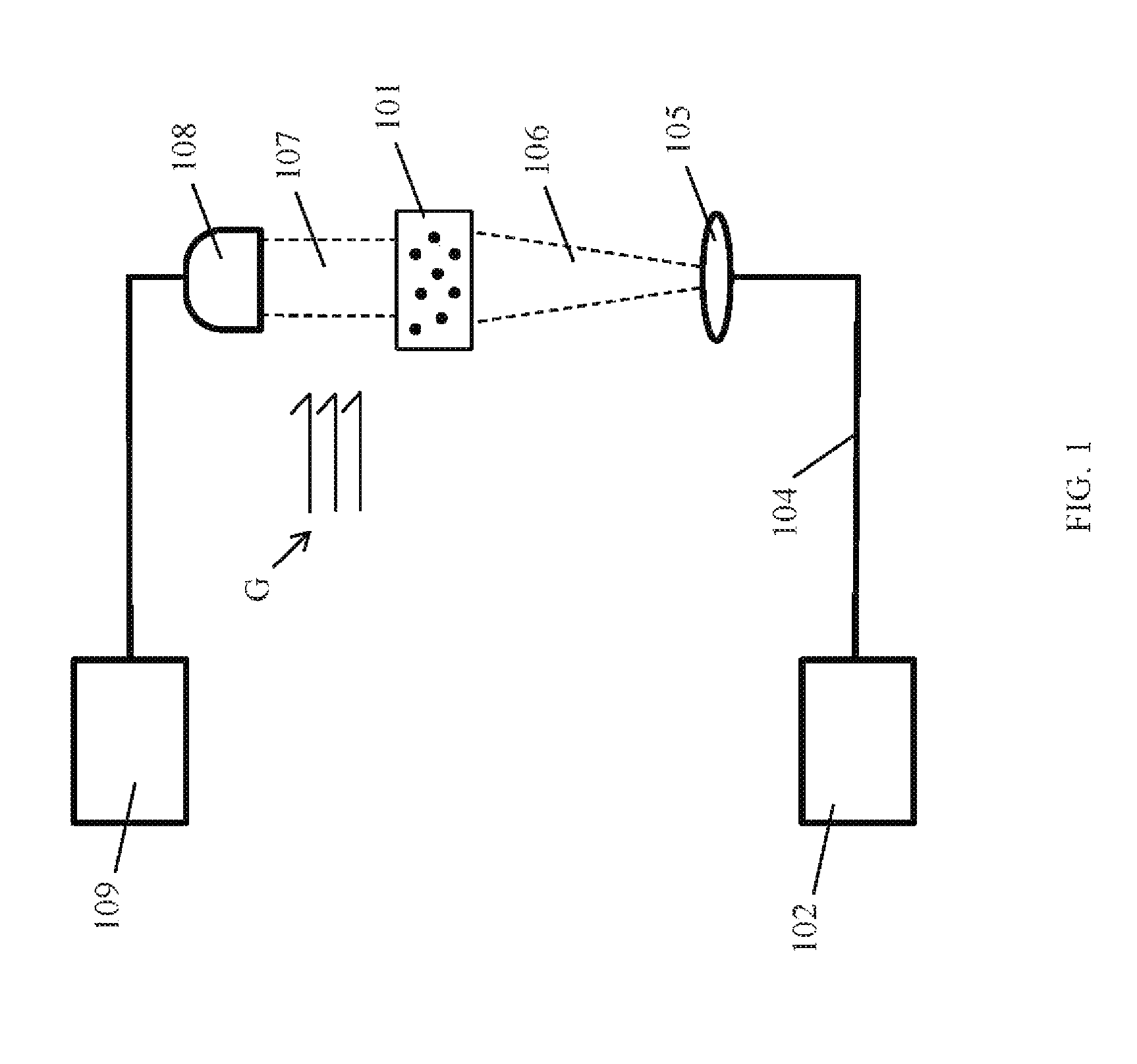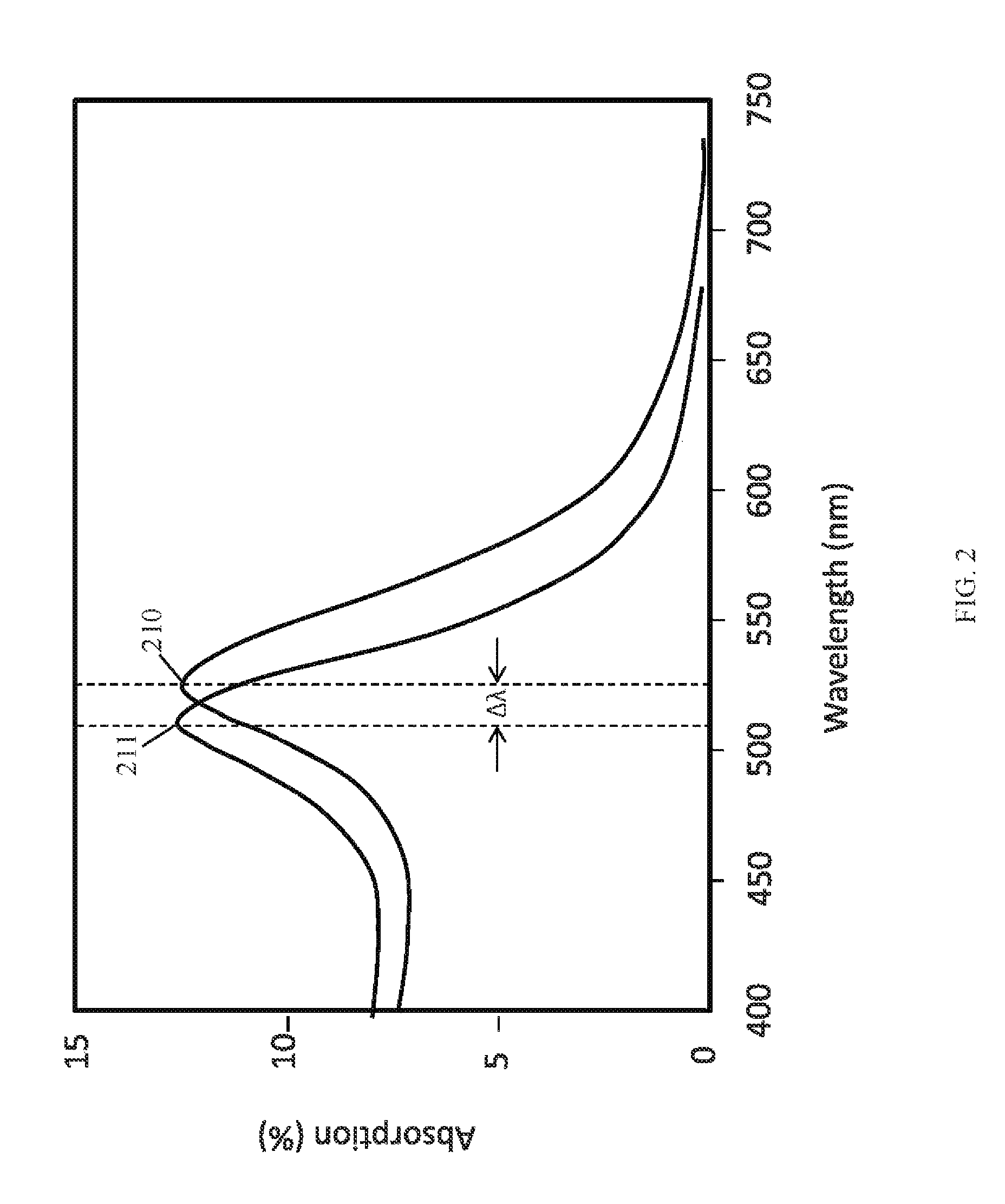Nanocomposite thin films for high temperature optical gas sensing of hydrogen
- Summary
- Abstract
- Description
- Claims
- Application Information
AI Technical Summary
Benefits of technology
Problems solved by technology
Method used
Image
Examples
Embodiment Construction
[0025]The following description is provided to enable any person skilled in the art to use the invention and sets forth the best mode contemplated by the inventor for carrying out the invention. Various modifications, however, will remain readily apparent to those skilled in the art, since the principles of the present invention are defined herein specifically to provide a method for H2 sensing at temperatures greater than about 500° C. based on the resulting shifts in plasmon resonance peak position generated by a hydrogen sensing material comprised of gold nanoparticles dispersed in an inert matrix.
[0026]The disclosure provides a method for H2 sensing in a gas at temperatures greater than about 500° C. by utilizing the shifts in plasmon resonance peak position generated by a particular hydrogen sensing material. The hydrogen sensing material is comprised of a plurality of gold nanoparticles dispersed in an inert matrix. The gold nanoparticles have an average nanoparticle diameter ...
PUM
 Login to View More
Login to View More Abstract
Description
Claims
Application Information
 Login to View More
Login to View More - Generate Ideas
- Intellectual Property
- Life Sciences
- Materials
- Tech Scout
- Unparalleled Data Quality
- Higher Quality Content
- 60% Fewer Hallucinations
Browse by: Latest US Patents, China's latest patents, Technical Efficacy Thesaurus, Application Domain, Technology Topic, Popular Technical Reports.
© 2025 PatSnap. All rights reserved.Legal|Privacy policy|Modern Slavery Act Transparency Statement|Sitemap|About US| Contact US: help@patsnap.com



